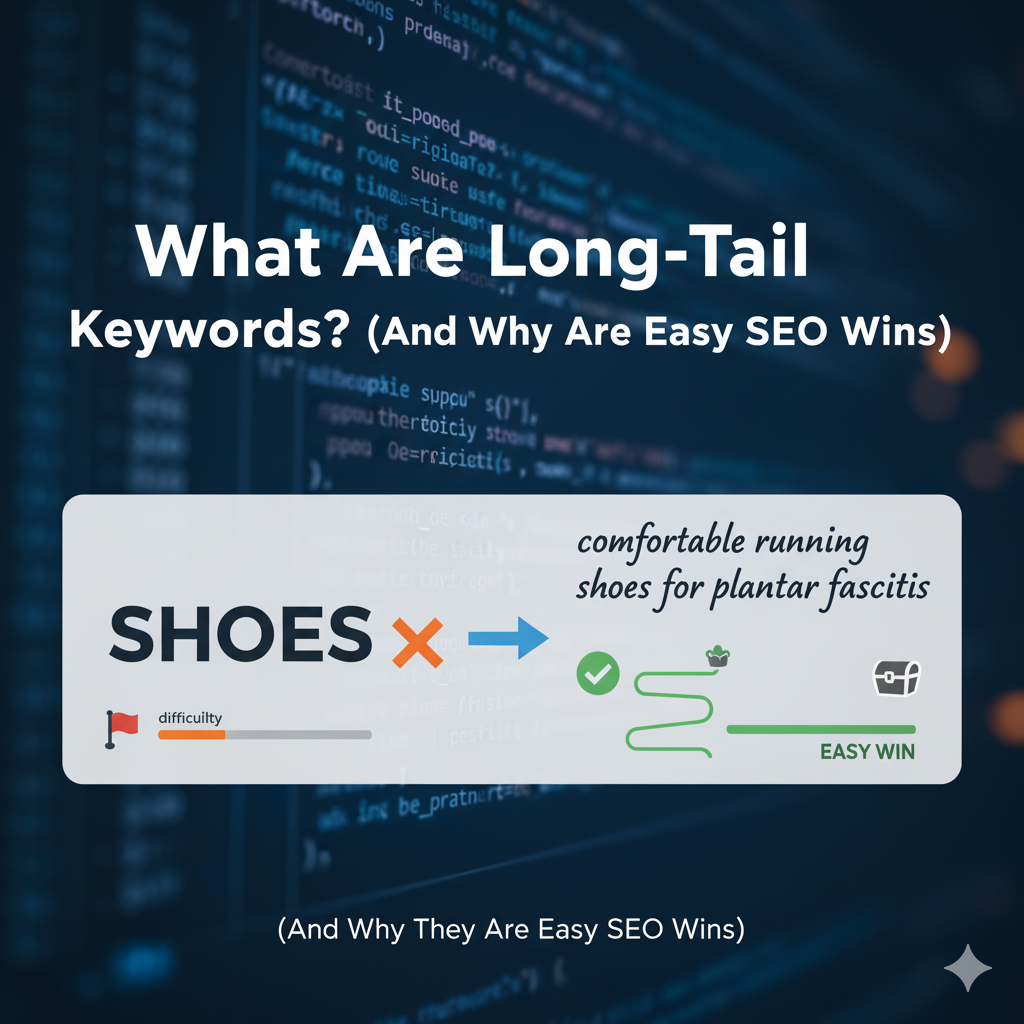
What Are Long-Tail Keywords? (And Why They Are Easy SEO Wins)
If you’re just stepping into the world of SEO or content marketing, chances are you’ve stumbled across the term long-tail keywords. Sounds fancy, right? But honestly, they’re not complicated and they can be a game-changer for small websites trying to compete with the big players. Basically, long-tail keywords help you snag targeted traffic that’s actually ready to engage, buy, or click. Let’s break it down.
What Are Long-Tail Keywords?
Long-tail keywords are just longer, more specific search phrases. Usually three words or more, they zoom in on exactly what someone is looking for.
Example:
Short-tail keyword: “laptop”
Long-tail keyword: “best budget laptop for students 2025”
See the difference? The short-tail gets tons of searches but is crazy competitive. Long-tail? Fewer searches, sure, but way easier to rank for—and the people who land on your page are usually much more ready to act.
Why They Actually Matter
1. Less Competition
Big brands hog the short, generic keywords. Long-tail ones fly under their radar, giving you a real shot at that first-page glory.
2. Better Match With Intent
Long-tail keywords tell you why someone’s searching. Are they looking for info, trying to buy something, or just browsing? For example:
- “how to bake gluten-free bread” → someone wants to learn
- “buy wireless earbuds online” → someone wants to purchase
Craft content that fits the intent, and suddenly your traffic starts converting.
3. Higher Conversions
Visitors typing long-tail queries are usually deeper in the buying journey. They’re not just window-shopping—they know what they want. Nail these keywords, and your signup forms, sales, or downloads see better results.
4. Supports Content Strategy
Targeting long-tail keywords lets you create detailed guides, FAQs, and blog posts. Over time, it builds authority around your niche, which search engines love.
How to Find Long-Tail Keywords Without Breaking the Bank
Even in 2025, you don’t need fancy tools to uncover these. Here’s what actually works:
- Google Autocomplete: Start typing your keyword and see what pops up. Real queries from real users.
- People Also Ask (PAA): Those little question boxes on Google? Goldmine for ideas.
- AnswerThePublic: Free tool that spins your keyword into questions and phrases people are asking.
- Related Searches: Scroll down Google’s results to see additional variations.
- Forums & Q&A Sites: Reddit, Quora, niche forums—peek at what people are struggling with or curious about.
How to Use Long-Tail Keywords in SEO
1. Write Targeted Content
Don’t just sprinkle keywords randomly. If your long-tail is “best budget laptop for students 2025”, write a detailed guide comparing options, prices, pros, and cons.
2. Optimize Page Elements
Include the keyword naturally in:
- Title tag
- Meta description
- H1 and subheadings
- Throughout your content
3. Cluster Related Keywords
Group similar long-tail terms into one piece of content. Helps Google understand your topic fully and boosts rankings.
4. Stick to User Intent
Make sure your content answers what people actually want. Provide value, give solutions, and guide them toward the next step.
5. Track and Refine
Google Search Console is your friend here. See which long-tail keywords bring clicks, and tweak your pages for even better performance.
Wrapping It Up
Long-tail keywords might seem small, but they pack a punch. Lower competition, higher conversions, and super-specific targeting make them a must for small websites or niche content. Focus on finding the right ones, build content around them, and you’ll see traffic that actually matters. In 2025, ignoring long-tail keywords? Yeah… not the move if you want sustainable SEO growth.
FAQs About Long-Tail Keywords 1. Are long-tail keywords only for small websites?No. Even large websites use long-tail keywords to target specific topics, capture niche traffic, and increase conversions.
2. How many words make a keyword “long-tail”?Typically, long-tail keywords consist of three or more words. The key is specificity, not exact word count.
3. Do long-tail keywords have less search volume?Yes, they usually have lower monthly search volume, but the traffic is more targeted and easier to convert.
4. Can I rank for both short-tail and long-tail keywords?Absolutely. A balanced SEO strategy targets high-volume short-tail terms for awareness and long-tail keywords for conversions.
5. How often should I update long-tail keywords?Regularly—every 3–6 months or whenever search trends shift. Tools like Google Trends can help spot rising queries.